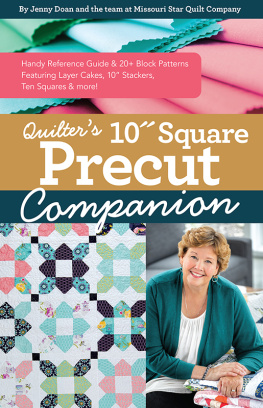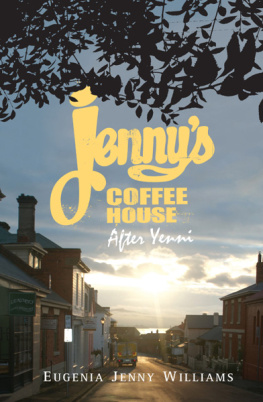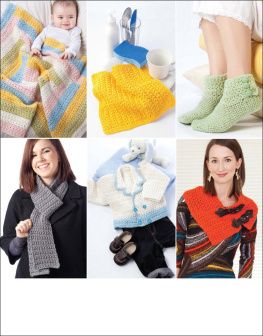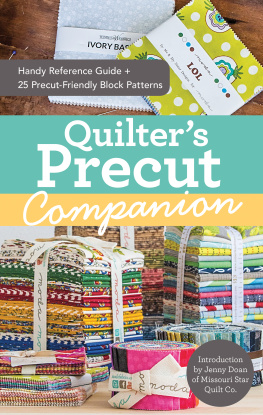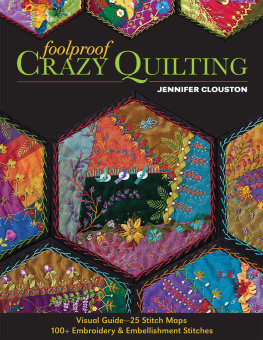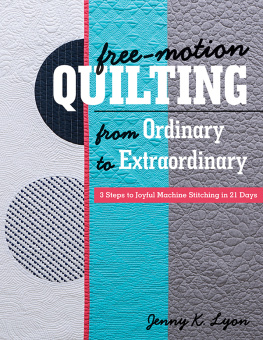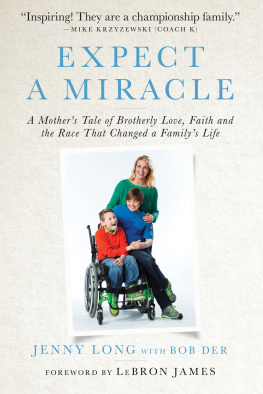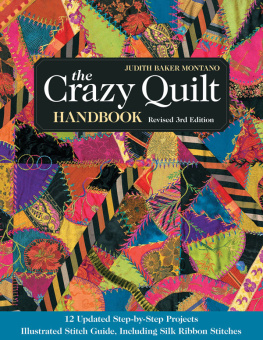Contents
Guide
How to Stitch an American Dream
Copyright 2021 Jenny Doan
All rights reserved. No portion of this book may be reproduced, stored in a retrieval system, or transmitted in any form or by any meanselectronic, mechanical, photocopy, recording, scanning, or otherexcept for brief quotations in critical reviews or articles, without the prior written permission of the publisher.
Published by Harper Horizon, an imprint of HarperCollins Focus LLC.
Book design by Aubrey Khan, Neuwirth & Associates.
Any internet addresses, phone numbers, or company or product information printed in this book are offered as a resource and are not intended in any way to be or to imply an endorsement by Harper Horizon, nor does Harper Horizon vouch for the existence, content, or services of these sites, phone numbers, companies, or products beyond the life of this book.
This is a work of nonfiction. The events and experiences detailed herein are all true and have been faithfully rendered as remembered by the author, to the best of her ability.
ISBN 978-0-7852-5305-1 (eBook)
ISBN 978-0-7852-5303-7 (HC)
Library of Congress Control Number: 2021939622
Epub Edition August 2021 9780785253051
Printed in the United States of America
21 22 23 24 25 LSC 10 9 8 7 6 5 4 3 2 1
To my husband and my children,
without whom none of this would be possible.
Most of us dont spend a whole lot of time looking back and dwelling on the little details of our own childhood. And I dont think many of us spend much time thinking about the choices we made that led us to where we are in our lives right now, either.
But recently, after my son Alan suggested I ought to write a book, I took a little time to ponder all of thatand boy was I surprised at what I found.
Its kind of funny to think about: The things we loved and the things we didnt, the toys we liked to play with and the games we couldnt stand, the projects we were forced to work on in school vs. the hobbies we happily spent hours and hours on at homethey were almost like little fortune tellers, predicting the paths we might want to take, or not take, as we grew up. The lessons our mothers or fathers taught us, or our grandparents or siblings taught us, or the quirky bits of our family histories, or the lessons we learned or tried to ignore in churchall of them seem to connect us to the decisions we end up making down the road, for better or for worse.
Whether we like it or not, the moments we remember, and even some we want to forget, all get stitched together over time.
Those separate little pieces form the fabric of our lives, and often help to prepare us for whatever lies ahead.
And sometimes were not prepared at all! Putting this book together tossed me into an entirely new creative process, and just like with quilting, I learned a whole lot along the way. As you might expect (if youve ever watched one of my tutorials), I remembered a few things in the middle of the process, and changed a few things spontaneously as I went along. I also made more than a few mistakes, and I had a lot of fun while I did it. And while Im certain this book is not perfect, I am very proud to say that its done.
Who knows, maybe my team and I will start a new YouTube channel to teach some tutorials on book writing someday! Maybe a fresh start when Im seventy?
All kidding aside, I do hope you enjoy this story of my familya family that never had a ton, but tried to make the most of everything we had.
Coincidentally, as I was working on this book, our country and the whole world fell into some uncertain times, which may or may not last a whole lot longer than any of us might want. I say coincidentally because our family is no stranger to hard times. We founded the Missouri Star Quilt Company right after the stock market crash of 2008. Some of what Im about to share with you talks about how we navigated through those times and successfully pushed through some other really challenging times long before that, too. We found our strength through those struggles by believing in each other, in our family, in faith, and in the almost magical power of givingeven when it felt like we had nothing left to give.
So today, with a little luck (and of course with the help of my awesome team), Im hoping that How to Stitch an American Dream will inspire you, the way my tutorials might inspire you to try your hand at quilting. By using my familys personal story as the example, what I hope to do is encourage you to take a look back at the fabric of your own life; to gain a new perspective, or to unlock your own hidden creativity; to revive a forgotten dream, or maybe even spark a new one. And what I truly hope is that when you take a look at all the scraps and bits and pieces my family managed to pull together to get through life, and to get our business off the ground, you might look inside and remember to believe in you. In your dreams. And in your own abilities to do something that you never dared to do before.
Its not too late. Its never too late. How do I know?
Because the very idea that I might one day get to share my family and my love of quilting with all of you beautiful people never even entered my mind.
At least, not for the first five decades of my life...
O nce upon a time, every mother taught her daughters to sew. Not mine. My mother didnt know how to sew.
Even my grandmother didnt know how to sew.
Yet I distinctly remember sewing at a very young age.
I cut tiny pieces out of my mothers old clothing because I needed to make an outfit for my doll. I didnt know how clothes were made, so I put them together however I could: I glued them, stapled them, taped them. In fact, I cant remember a time in my whole life when I wasnt piecing things together.
It is just in my DNA.
Later on in life, I learned that my grandmothers older sisters sewed. They learned to sew from their mother, my great-grandmother, out of necessity, in the late 1800s; and they sewed for their little sister (my grandmother) all the time because she was the youngest of thirteen children.
But some of my great-aunts did much more than sew for the family.
As young women, they found work as seamstresses. And they werent just your run-of-the-mill seamstresses. They were amazing seamstresses. They sewed for an artist named George Inness Jr. in New York. He was a famous painter whose father had been an even more famous painter of landscapes in the 1800s, and the work they did for him is part of what allowed the family to save enough money to buy a farm in upstate New York in the early 1900s.
Six of my grandmothers thirteen siblings had moved to America from their home country of Sweden by then, and together they chipped in enough money to bring my grandmother, my great-grandmother, my great-grandfather and the rest of the children to Americaon the Titanic. They booked tickets in steerage because they were still very poor people, but even so, can you imagine how excited they all must have been?
In April of 1912, the family packed up all of their belongings and took a little boat from Sweden to England, where they took a train to Liverpool in order to board that mighty ship. But when they arrived, they found out that the White Star Line had oversold the passage. We dont have room for all of you, a crew member told my great-grandmother. But let the boys go. Theyll be making history!
My great-grandmother wasnt having it: Half of my children are already in America, she said. I am not splitting up the rest of us. We will all go together or none of us will go at all!



